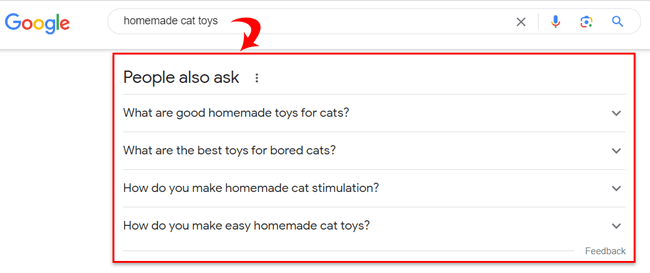Here’s something BIG you should know about Google:
Google prefers pages where the website owners keep updating the content.
Why?
Because it’s one of the easiest ways to ensure that the content on the page keeps being relevant.
Worried about keeping up? No need to fret; Squirrly SEO has got your back!
Squirrly automatically checks if the content of your Focus Pages has been updated in the last three months. It’s a handy reminder to keep your content sparkly and fresh.
If you’re using Squirrly SEO, you can easily keep tabs on this in the ‘SEO Content’ section of your Focus Pages.
And if you need some help with this task, you’re reading the right article.
Here are 4 ways to update and refresh an old blog post for SEO:
1. Answer Recent “People Also Ask” Questions

Start by searching your Focus Page’s main keyword in Google and look at the “People also ask” feature.
Address those questions directly within your content. You can either include a handy FAQ section or pepper in several concise new sections throughout the article.
By incorporating trending, relevant topics that people are actively searching for, your updated content can become a better match for their queries.
As a bonus, you’ll naturally increase your word count in the process.
2. Add Fresh Content Addressing Comment Topics
Dive into the comments section of your older posts. You’ll often find questions, feedback, or ideas from your readers that you might not have covered with the original post.
Addressing these topics can not only make your content more comprehensive but also foster a stronger connection with your audience by showing them you’re listening.
3. Update Outdated Information
Facts change. What was true or trendy two years ago might not hold today.
Go through your post and ensure every statistic, reference, and piece of advice contained in the post is up to date.
When you encounter content that’s out of date, you’ve got two paths to consider.
You can either keep the old text and introduce a segment with updated insights, or you can clear out the dated bit and write a new section in its place.
4. Add More Examples that Illustrate Your Points

When you provide real-life instances or scenarios related to your topic, your readers can better grasp the concept and relate to it.
These examples add depth and authenticity to your content, making your arguments more persuasive and your message more memorable.
The right example can often convey more than a paragraph of explanation.
One last thing before you go…
I hope you found these ideas helpful, but the biggest tip I want to share with you today is:
When updating a blog post, make sure you are doing so to provide extra value and not just for the sake of updating it. Your goal is to empower your readers, not overwhelm them.
Trim the excess and amplify the substance.













